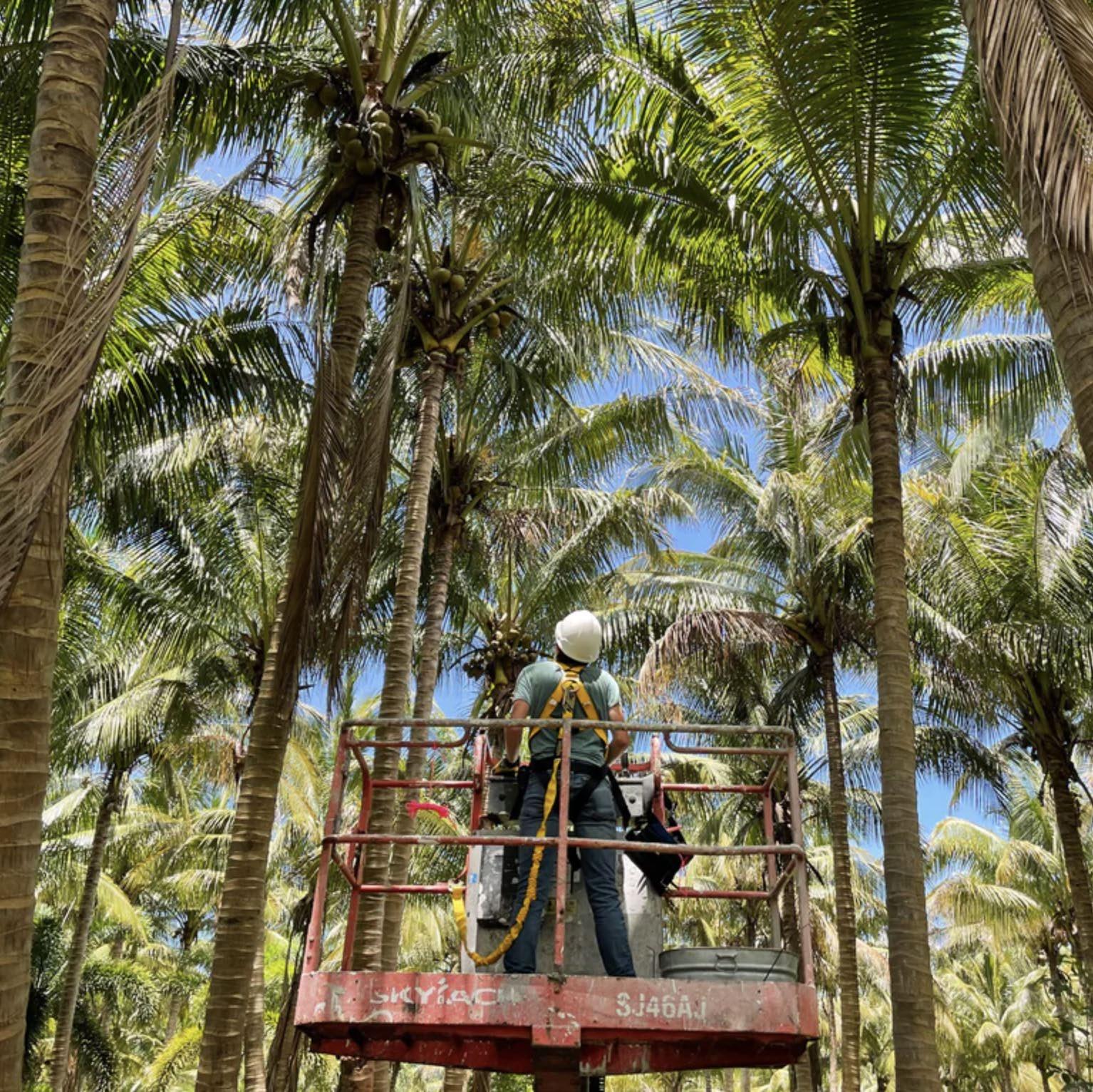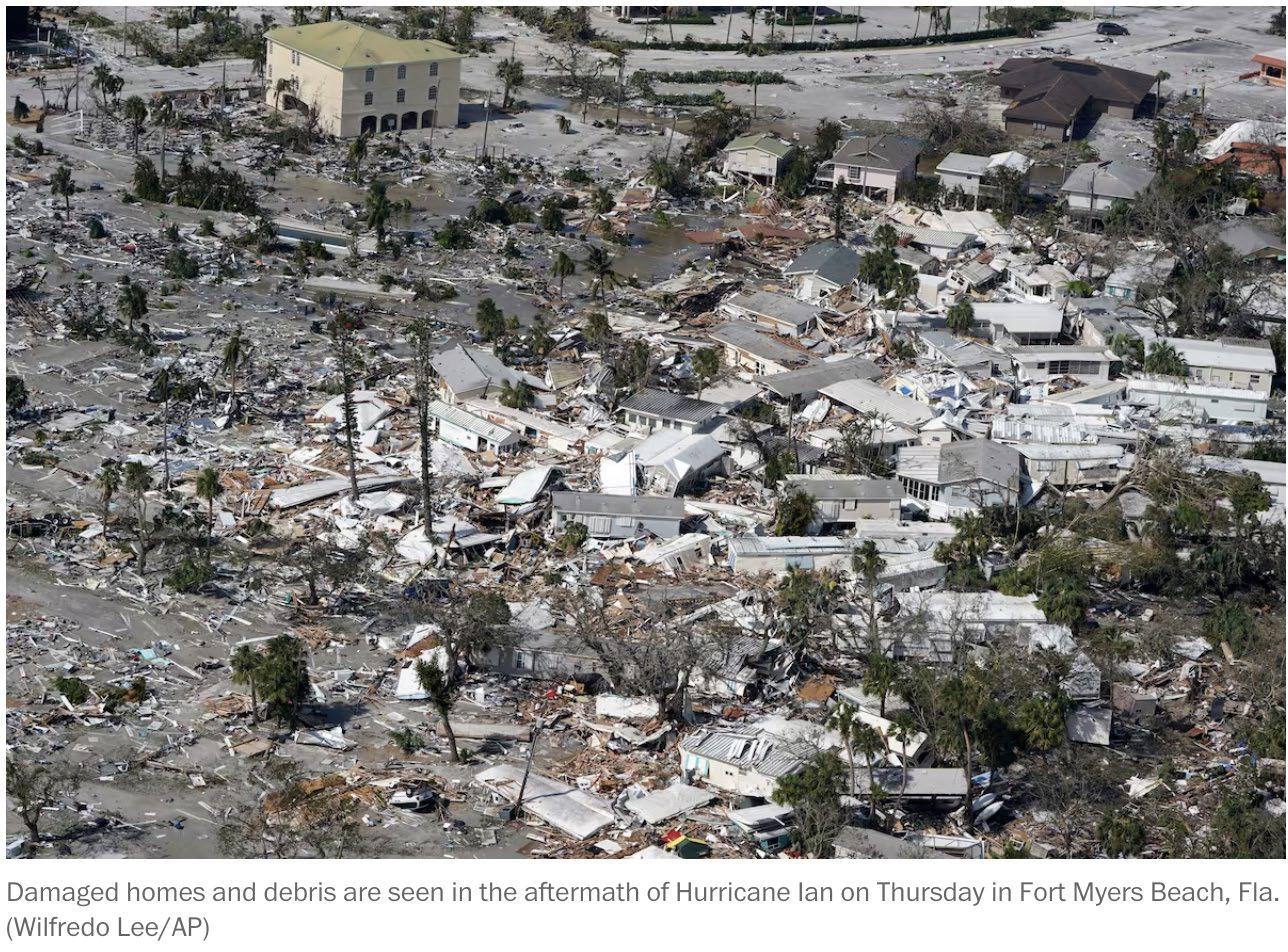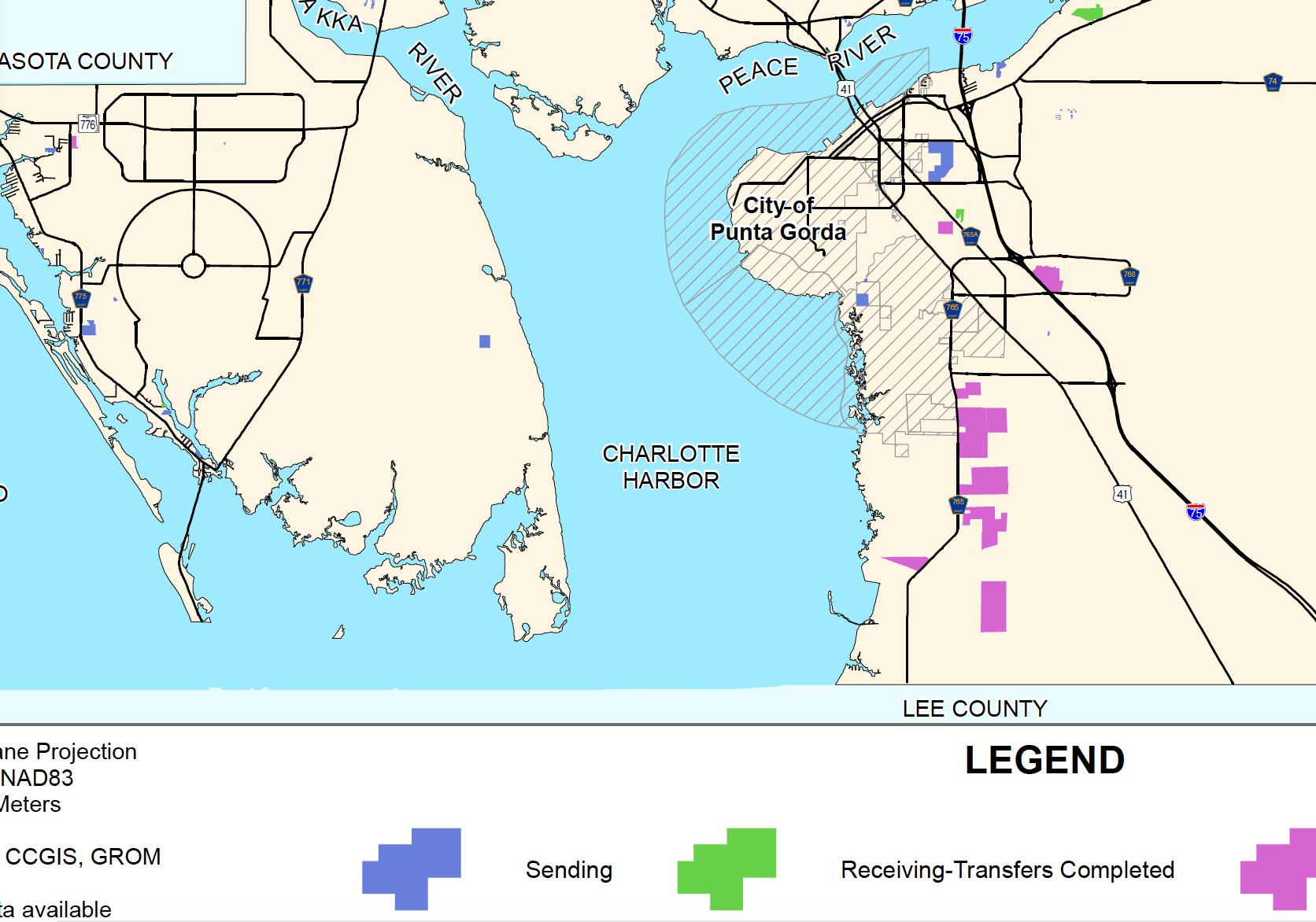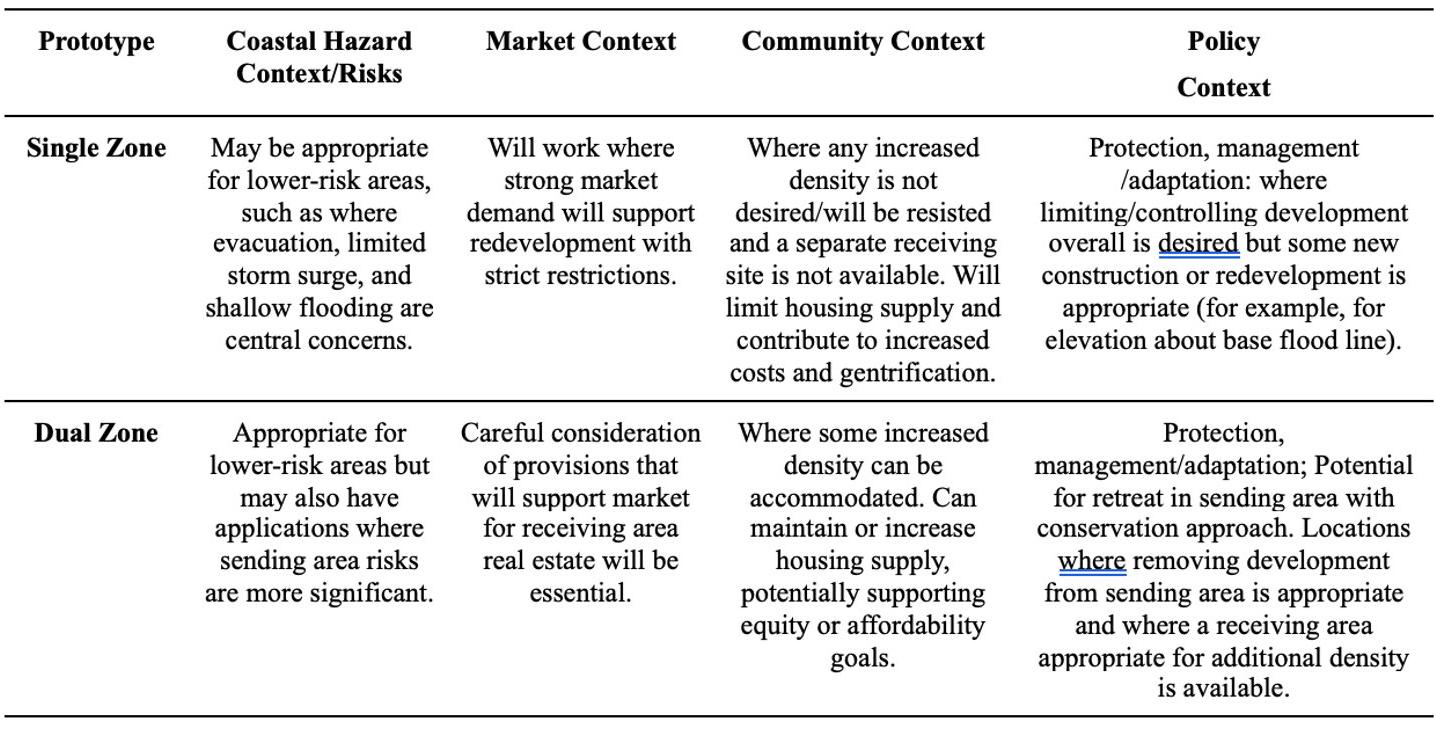Transfer of Development Rights for Coastal Adaptation:
CONCEPTUAL DESIGN AND PRACTICAL APPLICATIONS
Kerry Fang (FSU), Evangeline Linkous (USF), Alex Lammers (FSU), Tisha Holmes (FSU)
Florida American Planning Association Conference
September 2023
Sea level rise and the need for coastal resilience

Transfer of Development Rights (TDR) programs as a potential coastal adaptation tool?
The U.S. Environmental Protection Agency
The National Oceanic and Atmospheric Administration
The South Florida Regional Planning Council
The California Coastal Commission
The Georgetown Climate Center Land use scholars with expertise in TDR programs
What’s TDR?

TDR Applications
Agricultural, forest, or environmentally sensitive land preservation
Montgomery County, Maryland
Historic preservation NYC
Coastal resilience
Reduced density or complete retreat?
A few cases
Considerations in coastal contexts
What exactly are we talking about in coastal adaptation?
Retreat, protect, or manage/accommodate?
Is a complete retreat feasible? Private use value?
Coordination with existing retreat programs? Coordination with a land trust?
Protection or management
Redirect development within coastal communities
Equity
Practical cases studied
Florida
Miami-Dade (design of a future program)
Brevard County
Pine Island
Monroe County
Ocean City, Maryland
Oxnard, California
Tahoe Basin, CANV
Methodology
Goal: To identify key features that were and were not effective in managing coastal retreat
Key Program features determined based on past literature
◦ American Planning Journal assessment of TDR ProgramsPruetz and Standridge
◦ Land Preservation Under the Transfer of Development Rights Program- Fang
◦ TDR Program Performance in Florida- Linkous and Chapin
◦ From Land marks to Landscapes: A Review of Current Practices in the Transfer of Development Rights- Johnston and Madison Case studies determined specifically for coastal resilience
Methodology
•Interviews were typically 30 minutes
•A pre-approved script of questions was created before interviews took place, general questions for each interview, then specific questions depending on the case
•Some questions we asked: How many TDR transactions have been completed? How much land (acres) have been preserved to date? What is the land pattern induced by the program? How easy is it to buy and sell TDRs? What are some of the roadblocks you TDR program have encountered?
•Recordings were on Zoom and transcribed through Adobe as well as by the team
•Coding process: each team member went through specific cases and pulled out key points
Miami-Dade County, FL
Case Studies
Brevard County, FL
Tahoe Basin, CA- NV
Ocean City, MD
Pine Island, FL Monroe County, FL
Oxnard, CA
Miami-Dade County
Interviews
6 interviews, Hypothetical case, Dual Zone
Sending area: Arch Creek Basin (downzone)
Receiving area: Option 1- a major redevelopment site Option 2- upland area adjacent to sending area, each option rely heavily on politics
“Here we are talking about the actual ownership of the property changing hands and going into public ownership. I think that makes it more challenging. I think we need to talk about whether we’re essentially just talking about a buyout program with relocation assistance”
Miami-Dade County
Interviews
"That’s an interesting part of what came out of the workshop and maybe a little to my surprise: there was some significant sensitivity to displacement and gentrification based on that."
“Displacement, particularly in minority and historically black communities in South Florida, has become a very, very sensitive issue and it is really easy to get your project killed if you don’t pay attention to it”
"I think part of that suggestion around the TDR Bank was some kind of separate nonprofit that was likely to be more nimble and operationally easier to deal with for developers."
Pine Island
Interviews
1 Interview- Principal planner and Community Development Director, Dual Zone
Sending areas: Coastal areas and wetlands (downzone)
Receiving area: Main development area of Lee County
“I think one of the important changes is making it easier to get the bonus density approval to create demand”
"One thing that made the Pine Island, TDR program a little bit different andunique is that we allow the intensity calculation so that you can have a TDR that turns into commercial intensity, that allows parking sensors, parking reductions and landscaping reductions. And so that was something that was designed into this program that kind of sets it apart and made it widen the market for people, for developers to have interest in it."
Interviews
"I think we've had some implementation issues to iron out, just making sure that we're tracking everything appropriately."
"Within our coastal areas, we realize, those areas may be more deserving of being protected. So that's why we have the multiplier. But also, those the land in our coastal areas is more valuable. So it takes a little bit more for an owner or a developer to want to give up, you know, development potential in the coastal area."
"Pine Island has historically been an agricultural community, and that was something that was important to them. You can get to use and maintain an agricultural use on those properties."
Pine Island
Interviews
1Interview - Tahoe regional planning agency, Single Zone, multi-jurisdiction, online TDR bank
Sending: Must be more sensitive than the receiving site
Receiving: Anywhere on the Basin that is less sensitive than the sending site
"One big change, development rights can move all over the basin, and that's been a very positive."
"redevelopment is fairly slow, relatively speaking, here in Tahoe, just because of the nature of the land restrictions"
"In 2012, it was really shifting the culture and the mindset and our regulations to one that was more proactive and had more incentives for redevelopment, because we fully see that when property is redeveloped, that’s when we get the environmental gain."
Tahoe Basin, CA-NV
Tahoe Basin, CA-NV
Interviews
“There's a perception that development right costs or development costs in Tahoe are so exorbitant and so expensive just because of development rights or just because of, our environmental permitting. So, really getting out in front of the perceptions and educating people about why the program exists and, what is success of it is definitely a challenge for sure.”
“That platform for transparency and monitoring has been a real game changer for not only our agency but for the region."
"Education first and foremost is so critical and important...So the education not only extends to the community and the public, but it's regular trainings, education, different materials, and platforms to local planning agencies and things like that so they can, assimilate the information as well.”
In general, TDR isn’t the right tool for retreat.
Key Takeaways
Coastal risks inform where TDR may be appropriate.
Market conditions will determine where TDR may be viable.
Risk + market + community factors shape program design.
Coastal TDR faces challenges associated with governance of coastal areas.
•For a retreat context where elimination of private uses and development rights is appropriate, TDR is relevant only where integrated with a buyout program--more purchase of development rights than transfer.

•There may be very limited retreat contexts where goal is to eliminate residential uses but some remaining private uses may be continued (such as agriculture). TDR could work here but limiting factor will be market viability.
• Example: Pine Island, Florida’s agricultural uses.
•Because TDR typically involves continuation of some existing private use(s), it may be viable for coastal contexts of protection or management/accommodation.
In general, TDR isn’t the right tool for retreat
Tropical fruit production on Pine Island, Florida. Source: Gopal Farm
•Most likely to be relevant primarily for low-risk areas such as locations with limited storm surge not exceeding three feet.
•In such locations, TDR can be part of a redevelopment strategy promoting more risk-resistant building design.
•Higher-risk areas are more likely to be appropriate for buyouts or other strategies. New, elevated waterfront construction in Miami. Source: Patch.com

Coastal risks inform where TDR may be appropriate
Market
Strong market demand is a necessary condition.
Programs must be responsive to demand: types of uses, changing market conditions, etc.

conditions will determine where TDR may be viable
Lake Tahoe. Source: PriceyPads.com
Risk + market + community factors shape program design
•Single zone programs provide solutions where limiting or reducing development in an area overall makes sense; these programs can foster redevelopment.

•Dual zone programs provide solutions where an appropriately-located receiving area supports demand, especially for density, e.g. multi—family and/or hotel.
•Community values including equity and environment, as well as attitudes toward density—will be key factors.
 Arch Creek Basin, Miami. Source: Urban Land Institute Arch Creek Basin Study (2016)
Arch Creek Basin, Miami. Source: Urban Land Institute Arch Creek Basin Study (2016)
Coastal TDR faces challenges associated with governance of coastal areas
•Policy and incentive context is emergent and changes regularly in response to disasters
•Coordination with buyouts may present challenges
•State laws, e.g. Florida Senate Bill 250 – limits ability for local governments to regulate development after natural disasters

Fort Myers Beach after Ian Source: Washington Post
•A more viable model based on existing evidence, e.g., Tahoe and Monroe
•Leverages existing demand for coastal real estate in a given location
•TDR in tandem with strict environmental and development controls to reduce development potential overall within a single zone
•Protection or management/adaptation context
•Can support desirable redevelopment outcomes
•Will limit housing supply and thus likely to increase costs and exacerbate inequalities
Prototype: Single Zone
Monroe County’s Density Reduction Program leverages

TDR in vulnerable areas.
Source: Monroe County
Ave Maria in Charlotte County (RLSA)


Prototype:
•Segregates sending and receiving areas
•May be applicable in jurisdictions that exhibit a robust appetite for bonus density—along with an appropriately low-risk receiving area location
•Receiving area challenge: identifying a location where increased density is viable-–from political, environmental, and market perspectives
•Sending area challenge: Which uses can remain?
Will there be a market for sale of rights?
•Potential conservation approach: A land trust or similar entity buys out sending area rights or fee simple property and is allowed to bank and sell severed development rights. Creates revolving fund for land acquisition and leverages private demand for development.
Dual Zone








Conclusion
•Don’t believe the hype!
•Focus on market demand, which is strong in coastal areas, and whether that can meaningfully be leveraged while supporting coastal planning goals.

•Single and dual zone models offer guidance for designing coastal TDR.
•This is a fine-tuned tool.
Thank you! Questions?







 Arch Creek Basin, Miami. Source: Urban Land Institute Arch Creek Basin Study (2016)
Arch Creek Basin, Miami. Source: Urban Land Institute Arch Creek Basin Study (2016)












